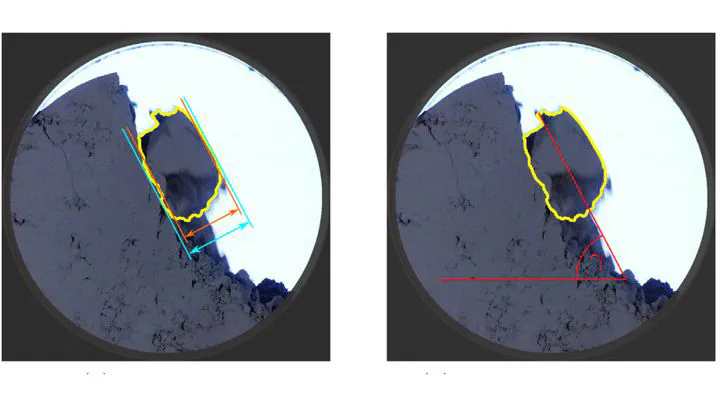A block-movement-based analysis for cohesive powders in a rotating drum experiment
Nov 12, 2021·, ·
1 min read
·
1 min read
Tobias Kronlachner
Stefan Pirker
Thomas Lichtenegger

Abstract
The precise characterization of the flow behavior of cohesive powders can be challenging. With the block-movement-based analysis, we introduce a more immediate characterization technique that even works for highly cohesive powders. Based on the strongly discontinuous dynamics in rotating drums dominated by the formation of large blocks and their subsequent breakage in abrupt avalanche events, it describes the flow behavior with geometrical properties of the falling down structures like block height or speed. Its advantages are the higher information content and the short observation time to get stable results. These properties make it a promising candidate for calibrating parameters for computer simulations. In addition, its high sensitivity allows to detect even small changes in the flow behavior. We demonstrate the method with three metal powders and identify the differences in their flowability. Furthermore, we investigate the influence of preconditioning at different humidity to underline the sensitivity of our approach.
Publication
Powder Technology
Very fine metal powders are very challenging to characterize because many standard measurements fail for highly cohesive materials. To overcome this limiation, my former PhD student Tobias built a rotating drum experiment with automated video analysis and material block detection. The resulting statistics on the size, velocity, etc. of the blocks can be used to characterize such powders and detect even slight changes in their behavior, e.g., because of humidity uptake.